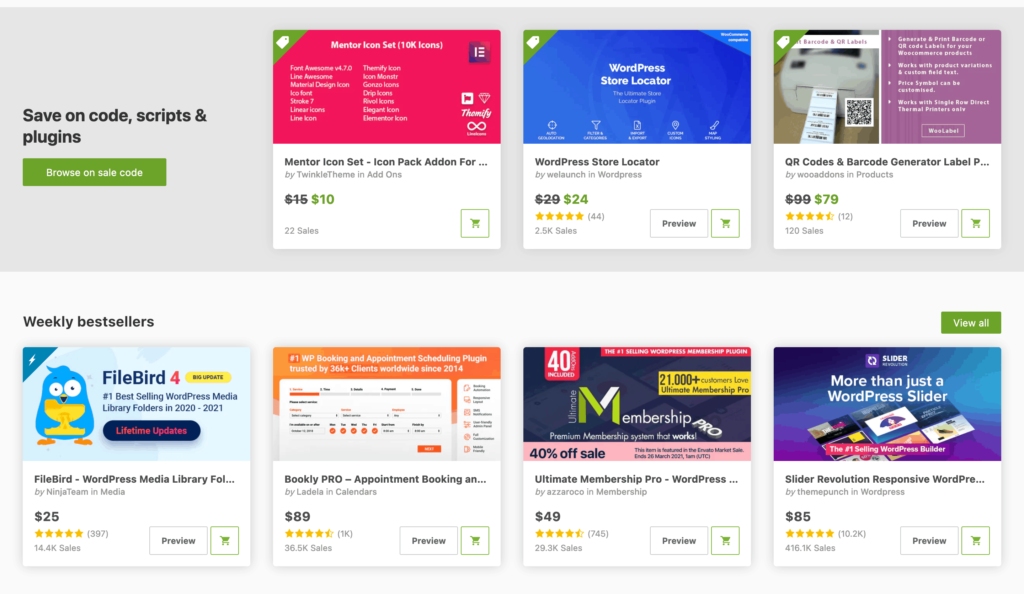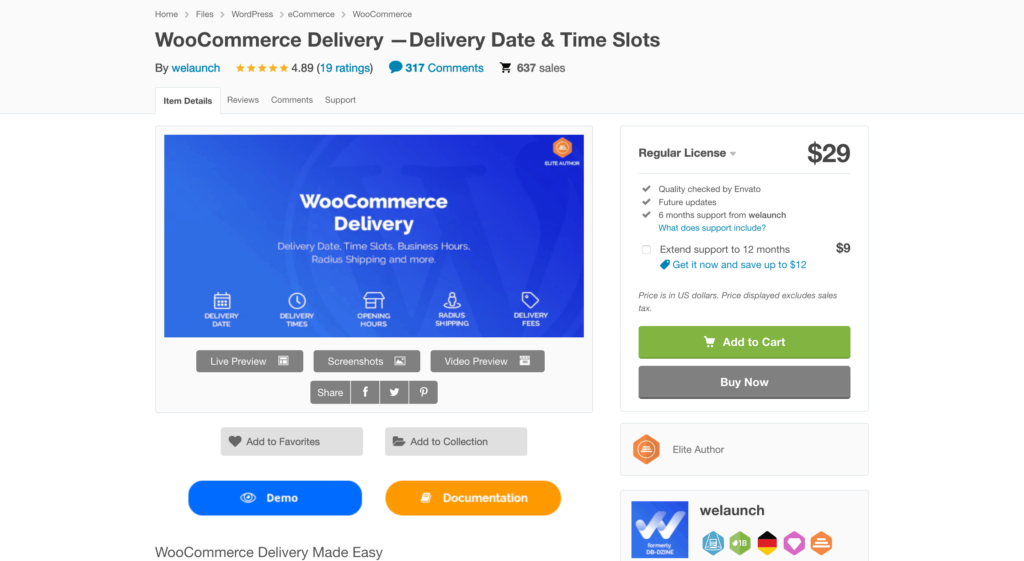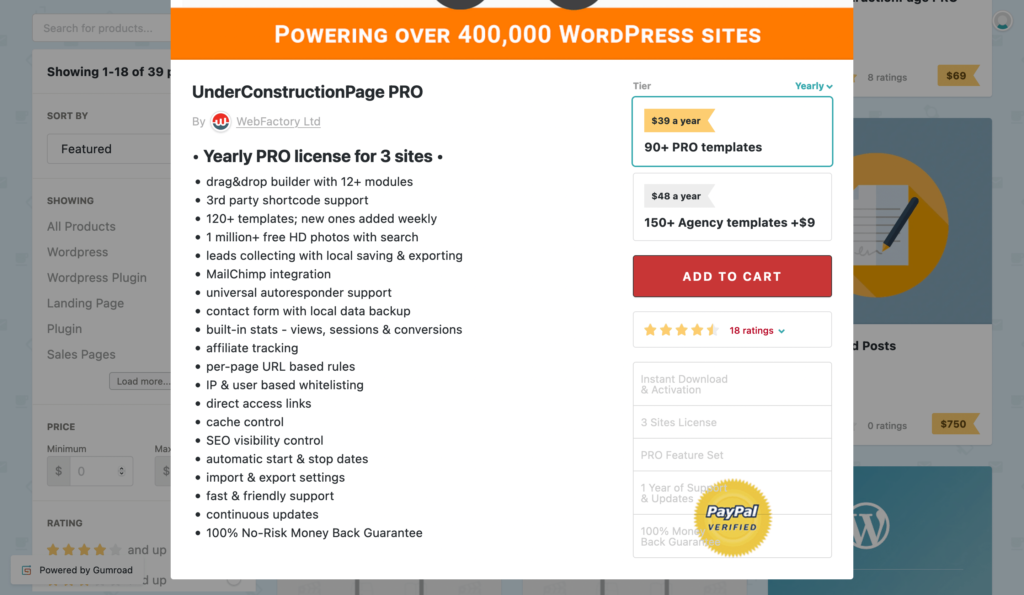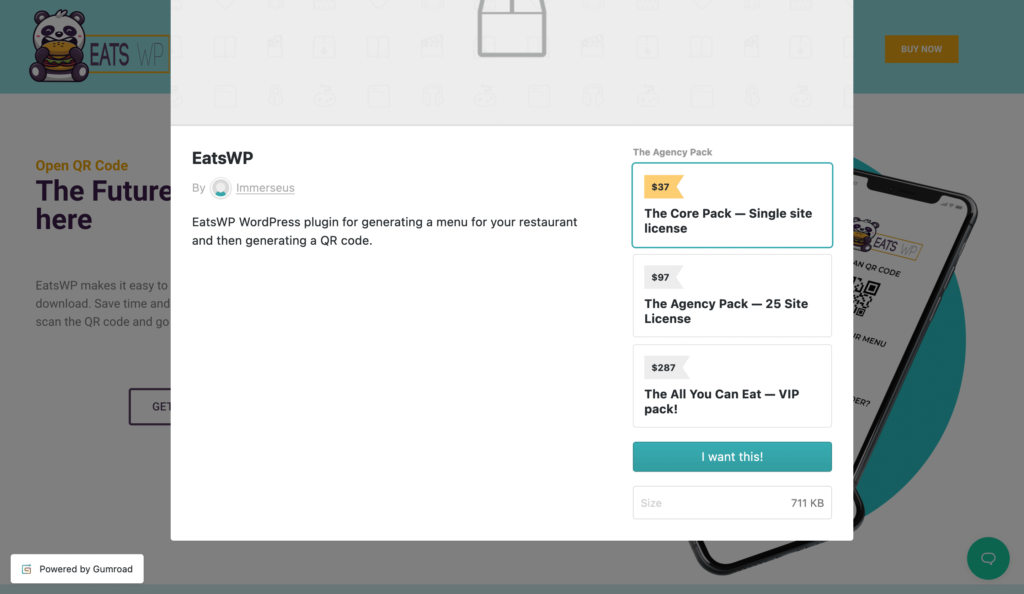There’s a lot of focus on developing your plugin, marketing it, and all of the other ‘sexy’ stuff related to creating WordPress products. Though, choosing where you sell you plugin could have a big impact.
Everything is connected, so your choice of selling platform can affect your business model. In fact, I’d argue that sometimes getting this part nailed down is one of the first decisions you’ll make at the start of a project.
As such, in this post I’ll look at a few ways to sell your WordPress plugin, along with some platforms and tools to consider. Though, before I get to that, let me set you straight on why you should sell your WordPress plugin.
Why You’d Want to Sell Your WordPress Plugin
First things first – this article will talk about selling your plugin, not giving it away. I’ve touched on why elsewhere, but here are the details in short:
- Without a cost attached, you’re getting no reward for the effort of developing a plugin. Even charging for support is giving you something to help continue working on your project(s).
- An end user will have less potential loyalty to your plugin, given that it’s cost them nothing to use it. If you’re giving away all of the functionality for free, this could keep users around. Though, consider whether charging some of those users can benefit you more.
- If you have aspirations of running a business, it’s not going to be viable if you’re offering free products (unless you’re Google, which you’re not).
Of course, having a free tier is different to a 100 percent free plugin, and this post is based on that premise.
How to Decide Whether You Need to Sell Your WordPress Plugin
Even so, there are some times you’ll not want to attach a cost to your plugin at all. I’m thinking of situations such as:
- You’re learning your craft, and the process of development and marketing your plugin.
- The plugin you’re creating doesn’t have a ‘plan’. In other words, you’ve made something for fun, but it’s turned into something you’d like to share with other users.
- Speaking of which, plugins with specific functionality, small niches, and few interested users aren’t going to be profitable. As such, this could be a candidate for giving away.
As you’d expect, this is a different topic than the one I’m talking about here. Though, just note that you don’t need to sell every plugin you create. With this out of the way, let’s get back to the topic in hand.
Why Multiple Channels Can Help You Sell Your WordPress Plugin
Stick with me on this one, but army generals know the value of fighting on multiple fronts at once. You’re able to attack the enemy from different sides, and bombard them with firepower.
Selling a WordPress plugin isn’t a like-for-like representation of tactical warfare. Still targeting potential users across multiple sales channels can bring some solid gains:
- You can improve your visibility across the web. Wherever your user is, you’re also lurking.
- Users who want to buy, but not on that channel, can head elsewhere for the same product.
- Loyal users of a platform (think Amazon ‘stans’) will often head there first. If your product is there as standard, there’s a better chance of being found.
This means while I’ll present some ways to sell your WordPress plugin, you should mix and match them to cover as many bases as possible. If nothing else, you can take advantage of functionality inherent to each platform to help maximize your sales.
3 Ways You Can Sell Your WordPress Plugin
Below, I’ll show you three ways to sell your WordPress plugin. As I noted, these aren’t presented in a bubble. You should have a potential presence on as many platforms as possible to gain the most coverage.
Let’s start with a common, easy entry point to selling your WordPress plugin.
1. Through a Marketplace
A WordPress plugin marketplace makes a lot of sense for a potential seller. You could say it’s the low-risk approach, with the least necessary effort. If you have a viable product though, it’s a total winner.
For the unaware, we’re talking about sites such as TemplateMonster, and CodeCanyon:

These are libraries full of thousands of plugins, grouped into categories. As a seller, you’ll set a price, and in return you host your plugin on the marketplace’s servers. You’ll get a dedicated sales page too:

For example, to sign up to CodeCanyon, you’ll need to become an Envato Author. This is the seller side of the platform, and it lets you create products for all of the sites within the ecosystem.
In my opinion, there are some big drawbacks to go alongside the positives:
- Because every aspect of the selling process happens on your chosen platform, you’re locked into it. For every feature you look to handle yourself, there’s more potential administration on your end.
- Of course, a marketplace will also take a cut of your sales. It means you have to account for this in your pricing model, which can hamper your competitiveness.
- Sales of plugins on these marketplaces are one time purchases, it isn’t possible to charge recurring subscriptions for your plugins. One time purchases as a business model is tough!
- Speaking of which, competition on these platforms is one of the biggest roadblocks to success in my opinion. There are often thousands of solutions, all vying for the top spots in search results. If you’re not among them, your visibility will be low.
You could look at a marketplace with fewer competitors, but this will also mean there’s often less traffic too. On the whole, a marketplace can be good to test the waters when it comes to selling your WordPress plugin, but only if you look to move away from the platform once you get serious.
2. Using a More Feature-Rich Marketplace
You may not have the time or the inclination to handle every aspect of selling your WordPress plugin. Though, you still might like to sidestep the lock in and competitive ecosystem. A solution such as Gumroad might suit you better:

While there’s a free tier, Gumroad is more of a premium solution. You’ll pay at least $10 per month (if you have under 1,000 customers), and this gives you more than you’d get with the likes of Envato.
You can use your own domain for a start, and customize your Gumroad page to a certain extent using CSS.

Though, if you leave it up to the platform’s ‘Gumroad Discover’ marketplace, the experience is similar to others. The killer feature of Gumroad for me is that you can embed your checkout into your site.
This gives you a way to defer some of the responsibility to another company, while handling most of the other aspects yourself:

This option brings up another good solution to sell your WordPress plugin, and involves taking control of the checkout process too. Let’s talk about this next.
3. Through Your Website
With Gumroad, it makes sense to embed the payment functionality on your own website, as this gives you the best of both worlds. Though, you can take things further, especially as a WordPress site owner and developer.
Of course, there are a lot of solutions available to help sell products and services through WordPress. WooCommerce and Easy Digital Downloads are rock-solid ways of adding payment gateways and more to your site.

There has been a lot of ink spilled over these two self-hosted ecommerce solutions, so let me give you a third option: Freemius.

This is a hosted platform designed for WordPress developers, and comes with a wealth of features. For example:
- You can set licensing on a per-tier basis.
- You’re able to use multiple payment gateways out of the box.
- There are options to set up recurring payments and subscriptions.
- It becomes the vendor of record, handling tax collection and reporting.
It’s a real developer’s platform. You can use one repo to manage your code base, perform staged rollouts, and so much more.
I’d argue that a solution such as Freemius is the best choice feature-wise. However, there’s a 7 percent markup on any sales, not including gateway fees. This means your plugin either doesn’t price up competitively, or you take the hit.
Of course there is a cost involved in self-hosting a ecommerce solution like EDD or WooCommerce. There are addons to buy, like payment gateways or licensing addons, that have a yearly charge, as well as the cost involved in developing new features or troubleshooting when your checkout breaks due to an update to another plugin.
Using the WordPress Plugin Directory to Your Advantage
Before I wrap up, it’s worth noting that you can combine some of the above, and leverage the WordPress Plugin Directory too.
If you’ve decided on a freemium business model, funneling customers through the WordPress Plugin Directory can benefit you. You’ll have a captive audience to upsell to, and can also leverage third-party tools to help drive traffic.

For example, Plugin Rank lets you monitor how your plugin performs within the directory, and sends you reports to your inbox on a regular basis.
You’re able to track multiple metrics and work with the data to optimize the premium stage of your funnel. This way, you can choose the right option for your customers to get onboard with your premium offerings, or jump to a paid plan.
In Summary
Choosing how to sell your plugin is a big part of the development phase. This is because it affects what you charge, the features you include and leave out, and much more. I’d say that having a solid idea of where your plugin will end up is one of the first things you should think about when beginning a project.
As such, this post has looked at three ways you can sell your WordPress plugin. Let’s recap:
- Host your plugin on a marketplace such as CodeCanyon, TemplateMonster.
- Use a platform such as Gumroad to embed checkouts into your site, while still leveraging the marketplace for additional visibility and sales.
- Host your plugin on your website, using WooCommerce, Easy Digital Downloads, Freemius, or another solution.
Do you want to sell your WordPress plugin, and if so, which of these options appeals to you? Let me know in the comments section below!
